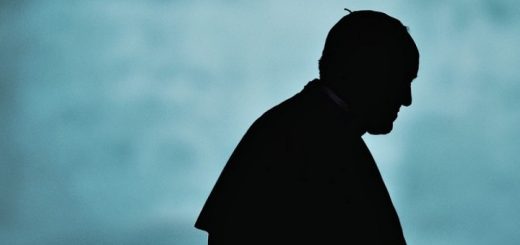Trump's ideas about organic sex ignore a more complex reality
Reflections of the Jesuit James F. Keenan* Ubblicate on the site of Outreach (USA) on March 19, 2025, freely translated by Luigi and Valeria de La Tenda di Gionata.
On February 19, Robert F. Kennedy Jr., secretary of the Department of Health and Personal Services, published a "guide" of two pages entitled Defining Sex (Define sex).
The guide follows the executive order of President Donald Trump Defenseing Women from Gender Ideology Extremism and Restoring Biological Truth to the Federal Government (Defend women from the extremism of gender ideology and restore the truth of biology in the federal government) of 20 January 2025.
Together with other twenty-five executive orders that President Trump signed on the day of the inauguration of his second presidential mandate, this decree kept the promise made by Trump in June 2023 to protect women from, as the document claims "socially imposed modes that allow men to self-identify themselves as women and to access activities and spaces reserved for people of the same sex and designed for women, from the refuges for domestic abuses. showers for women in the workplace ».
Kennedy's document establishes the guidelines for identification of sex. When the secretary presented it, he said: "This administration is reporting common sense and restoring the truth of biology in the federal government. The policy of the previous administration, which tried to insert gender ideology in every aspect of public life, is over ".
It is interesting to note that, apart from the reference to a previous executive provision, the word "genre" does not appear. Rather, Kennedy defines sex with a clear and clear affirmation: «There are only two sexes, female and male, because there are only two types of gametes. A human individual is female or male depending on whether it belongs to sex characterized by a reproductive system with the biological function of producing oocytes or sperm ".
The guide also states: "Having the biological function of producing oocytes or spermatozoa does not necessarily require that the oocytes or spermatozoa are actually produced".
Finally, he adds: «The sex of a person is immutable and determined by biology in an objective and defined way. The use of hormones or surgical interventions do not change the sex of a person because these actions do not change the type of gametes that the person's reproductive system has the biological function of producing. The rare conditions in which there are anomalies of sexual development do not constitute a third sex because these abnormal conditions do not lead to the production of a third type of gamete ».
But is the sex of a person always determined by "biology in an objective way", as the guide claims?
The reality of intersex people
At this point I propose to focus on the category of intersex people. Further on I will speak of the transgender community, much wider and more well known. But here I want to judge the guide using its own terms and argue that, in fact, if we consider intersex people, biology does not indicate the sex of a person.
Furthermore, you cannot even answer the question if the binary category of the two sexes is useful to define all humanity sufficiently. This does not necessarily mean that three sexes exist, but only that insisting on one or the other is not in itself sufficient to understand intersex people.
In fact, the Office of the High Commissioner for Human Rights of the United Nations begins his page on intersex people Precisely with this observation: "intersex people are born with sexual characteristics (such as sexual anatomy, reproductive organs, hormonal and/or chromosomal models) that do not adapt to the typical binary notions of male or female body".
Rather than imagining or arguing that the two categories are sufficient, other groups such as theAmerican Academy of Pediatrics They try to provide a series of terms and categories that can help people, their families and doctors to understand and respond to the different ways in which everyone's sexual identity can and must be understood.
In short, since binary categories are not enough to understand all the complexity of human reality, we cannot simply avoid this discussion, but we need other indicators to help us understand who we are. That's why theAmerican Academy of Pediatrics It provides different categories to help us understand better.
In fact, to the extent that the same guide of the Department of Health and Personal Services recognizes the presence of "rare anomalies", it actually claims that these "rare anomalies" do not constitute "a third sex".
Despite this, those who live in one of these conditions do not still fall into the binary categories. However, using the term "rare" limiting, the guide seems to try to diminish the relevance of the category. Looking at the numbers, we will realize that this statement does not convince.
A look at the numbers
If you are looking for the numbers of this "rare anomaly", there is often the figure of 1.7% of the world population (equal to 8,210,000,000 people). This therefore corresponds to about 140 million intersex people. However, this assessment by Anne Fausto-Strling of 2000 stimulated one office Next, made by Leonard Sax in 2002, which indicated a drastically more restricted definition of the Incersex condition and said that: "The real prevalence of intersexuality is about 0.018%, almost 100 times less than the estimate of the Fausto-Strling study of 1.7%".
Subsequent studies have never obtained as high percentages as those of Fausto-Strling nor as low as those of sax.
Although nobody considers the so low figure of sax, that estimate would still give a number of 1,477,000 intersex people, a number of people who, even if it is only a small part of the world population, cannot be liquidated as not worthy of attention.
Subsequent studies conducted in different nations They reported different results and between the two extremes mentioned.
The organization Interact notes That: "The lack of data available on people with intersex traits and their experiences is a serious problem". They explain: «The estimates on the size of the intersex population vary according to the definition used by researchers, and guaranteeing a representative sample outside the clinical contexts is difficult. In addition, the stigma that surrounds the intersex traits means that many intersex people are not willing to reveal their condition of intersex. "
However Interact, together with Center for American Progress, estimates that "up to 1.7% of the population has an intersex trait and that about 0.5% of people in the world have clinically identifiable sexual or reproductive variations".
The disappeared intersex people
Certainly, it seems that intersex people are a stumbling block for the ambition of the secretary to health and the president to limit the definition of sexual identity to that considered objectively biological.
The fact that intersex people are not well known derives from our own inability to recognize and accompany them. What I would like to make it clear is that our ignorance towards them leads to our lack of recognition. Indeed, the lack of one feeds the other.
When we begin to get to know the intersex people better, we will discover that taking them seriously, we will not be able to take the guide seriously Defining Sex.
Like the proposer of Defining Sex, many of us probably thought that these people were a rare case. But they are not rare at all, even if they are not recognized as such.
In his book Doubt Bodies: An American History of Incersex, Elizabeth Reis brings the reality of intersex people in our life. In this book we can know their terrible struggles and those of their parents. Here we can know everything about shame, society's expectations, problematic and unwanted surgical interventions and the other challenges that entails the attempt to affirm their sex.
What intersex people know are the social prejudices and the violent and humiliating attacks with which they are forced to confront each other continuously. We do not know these attacks because we don't think we recognize these people. However, their struggles, little known and enormous, are described in the introduction to the sixty -eight pages of the office of the high commissioner for human rights of the United Nations on violations of human rights of intersex people.
The more we meet them and recognize them, the more we will learn to know their reality from them and with them and we will join them to understand their challenges.
Now, the attempts of the Minister of Health not to give importance to intersex people because it would be "rare anomalies" can be seen as a pretentious affirmation that further damages and isolates intersex people and their very complex challenges, which must not be diminished or ignored, but recognized and faced.
In addition, their condition and their struggles make the claim of the Trump administration even less credible to reject the claims of the members of the transgender community, which appeal to the recognition of their kind beyond the biological data.
As with intersex people, we must also recognize and accompany the transgender community, which the original executive provision of the de facto president opposes. As I have already written previously, we must listen to transgender people to understand how they understand themselves, their body, their sex and their kind, not to mention the social groups and the structures that offend and damage the community.
In fact, I believe that we have a lot to learn about sex and gender precisely from intersex people and the transgender community, so much so that their silence will damage not only them but also our own understanding of sex and genre for all human beings.
Signs of hope
I conclude with three other signs of hope that highlight the way to go to find out more.
First, theologians raised the problem of intersex people for some time, in particular Katie Grimes in an essay that criticized complementarity in 2016 and Michael G. Lawler and Todd Salzman in their response five years ago to the Vatican Congregation document for Catholic Education "Male and female created them" for a way of dialogue on the question of gender in education.
Secondly, despite its position on gender ideology, the Vatican recently recognized the condition of those who suffer from dysphoria, as Cardinal Víctor Manuel Fernández, prefect of the Dicastery for the doctrine of faith, recognized in a doctrine, in a convention In Cologne in mid -February.
Finally, like report OutreachPope Francis is increasingly meeting transgender Catholics during general hearings.
These meetings not only give further recognition to the transgender community and, hopefully, greater awareness and support for intersex people, but make us more aware and perhaps more solidarity with those who our current government wants to reject and in the other neglect.
But recognizing the other person, neglected and refused, has always been the invitation of Jesus, since he taught us the parable of the good Samaritan.
*James F. Keenan SJ is a professor of Theology at Boston College. He is also vice-provider for the global commitment and director of the Jesuit Institute. His most recent books are A History of Catholic Theological Ethics (Paulist Press, 2022) e The Moral Life: Eight Lectures (Georgetown University, 2024).
Original text: James Keenan, SJ: Trump Rules On Biological Sex Ignore More Complex Reality






